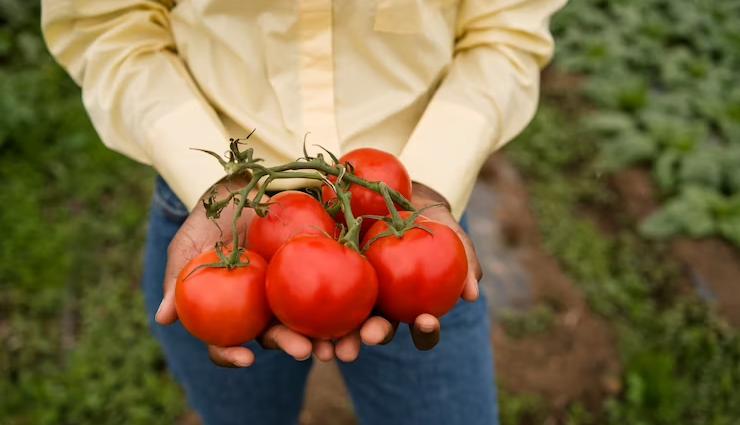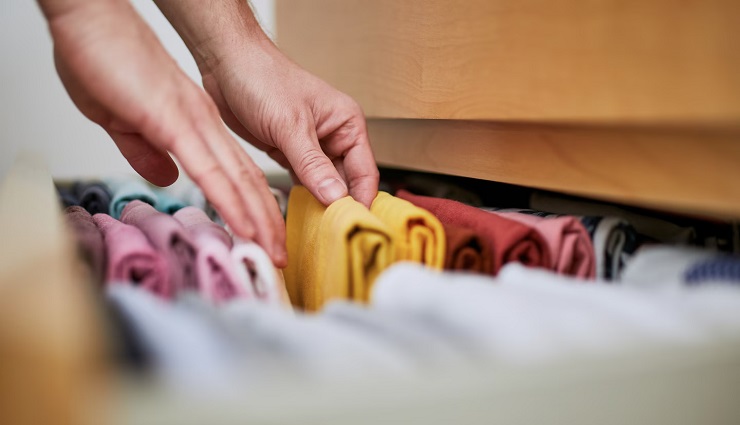If you are interested in growing fruits and vegetables, you have probably already considered planting tomatoes. With all the varieties of tomatoes, their delicious taste, and their health benefits, why not love this job? With enough attention to planting, keeping, and harvesting this plant, you can have a fruitful harvest this year and even in the coming years. Next, we explain the easiest way to plant tomatoes and everything you need to know.
Choosing the right place to plant tomatoes
It doesn’t matter if you grow tomatoes at home and in pots or are thinking of growing them in the field; However, tomatoes need a lot of light. This plant prefers 8 to 10 hours of direct sunlight in northern regions. In the southern areas, bright afternoon shade helps tomatoes survive and grow.
Also, the place you choose to plant tomatoes should not have grown tomatoes or similar plants, especially eggplants, peppers, and potatoes, in the last year or two.
1. Planting tomatoes in the field
Planting tomatoes in the ground is the best way to grow this plant. In this case, you can grow almost any type of tomato, and you don’t have to water it as much as needed in planting tomatoes in pots. This planting method is also used to harvest more crops.
However, planting tomatoes in the field also has disadvantages:
- If the plant’s soil becomes infected, it will be difficult to sterilize that farm area or change the earth.
- Usually, tomato gardens are more vulnerable to animal attacks, such as mice, birds, and squirrels.
To plant tomatoes in the ground, you must choose a place in the field that receives 6 to 8 hours of sunlight daily.
2. Planting tomatoes in high boxes
If you’re concerned about contaminants in your soil, this is a great option. In case of diseases and pests, you can easily change the ground of these boxes. Loose soil has better drainage and aeration compared to garden soil. If you have back or leg pain, this planting method has the advantage that you don’t need to bend over while gardening.
The disadvantages of this method are:
- To store and harvest the product better, you must have enough space between the boxes.
- Preparing things like wood and untreated soil for this would be best.
- The soil in the boxes that are higher dries faster than the soil on the ground.
3. Planting tomatoes in pots
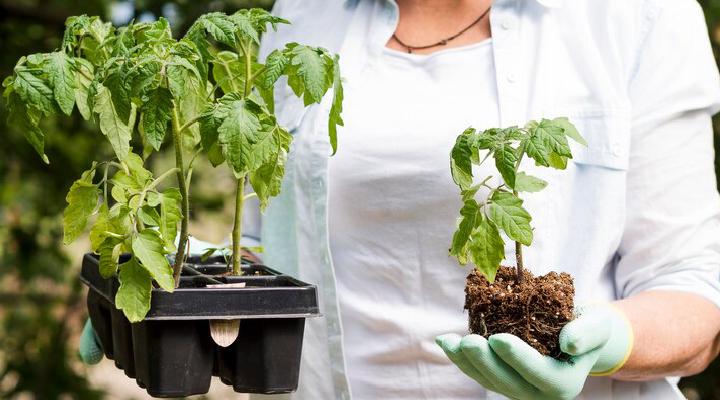
You can use pots to plant tomatoes at home and in smaller spaces. Portable planters are perfect for homes with smaller yards. Of course, these pots need constant watering because their soil dries quickly. Also, you should use a guardian if you live in windy areas.
Some of the popular pots for planting tomatoes at home are:
- Recycled plastic pots: These are cheaper, and you can find them easily. These pots are usually light and portable, but you should check their drainage holes.
- Dark-colored plastic pots: Such pots overheat and leach chemicals into the soil.
- Metal buckets: These buckets are among the most popular options for planting plants like tomatoes. However, metal buckets can rust and spoil the look of your patio or landscaping.
- Barrel Pots: Large barrel pots are an attractive option for growing tomatoes and have enough space for the roots to grow. Of course, moving these pots and, eventually, rot is difficult. Making holes for their drainage and checking these holes during the growth of the plant is not easy.
You can install the pots next to the railings on the top floor of the building. By doing this, watering the plant becomes more accessible, and you face fewer plant pests.
Steps and methods of planting tomatoes in the field
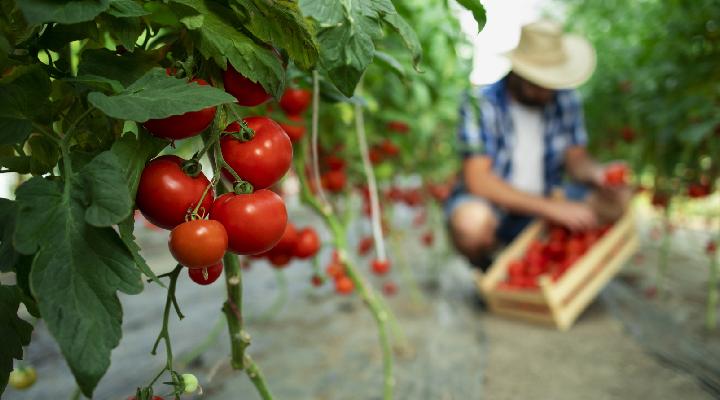
1. Buying tomato seedlings
Prepare their seedlings first to plant tomatoes in the garden or field soil. Choose healthy-looking seedlings. It is better to buy seedlings of this plant closest to planting.
2. Preparing the tomato planting bed
Add plenty of compost to the garden soil, as tomatoes need soil rich in organic matter. You need 25 to 40 kg of compost for every square meter of soil.
Before planting the seedling in the soil, put a few handfuls of organic matter or eggshells in the planting hole. These materials become the plant’s nutrients by deepening the roots and increasing the yield.
3. Checking soil pH
Tomatoes grow in slightly acidic soil. Very acidic soil destroys the plant’s calcium and eventually rots the flowers. Soil pH should be between 6 and 6.8. If it goes above 6.8, you can water it with a mixture of chilled coffee and water in equal amounts. You can also add one pine needle mulch to it. If the pH of the soil is less than 6, add dolomite lime or calcium-rich materials such as eggshells or calcite.
4. Choose a sunny place
Tomato plants should be in full sun. If you live in dry areas, the plant needs at least 6 hours of sunlight daily. It would be best also to choose a place with partial afternoon shade in regions with hotter climates.
Tomatoes can tolerate full sun even in hot weather. Only the soil should be well mulched and watered.
5. Determining the proper distance for planting seedlings
Tomato plants should be 45 to 90 cm apart. This space is enough for watering, removing weeds, and harvesting.
Plants should be spaced 23-46 cm apart if you live in a warm climate. This less distance makes the leaves of the plants shade each other’s fruits and prevents them from burning.
6. Planting tomatoes on the ground
Digging deep holes to plant tomatoes in the field or garden would be best. Plant about 50 to 80% of the plant in this hole. Firm the soil around the roots. Make sure the bases are entirely covered. Cutting the plant’s lower leaves would be best not to be in the ground.
To remove the tomato seedling from the pot, tap the end and try to separate the roots and soil from the pool together. Try not to damage the roots so that a healthy plant is planted.
How to plant tomatoes in pots
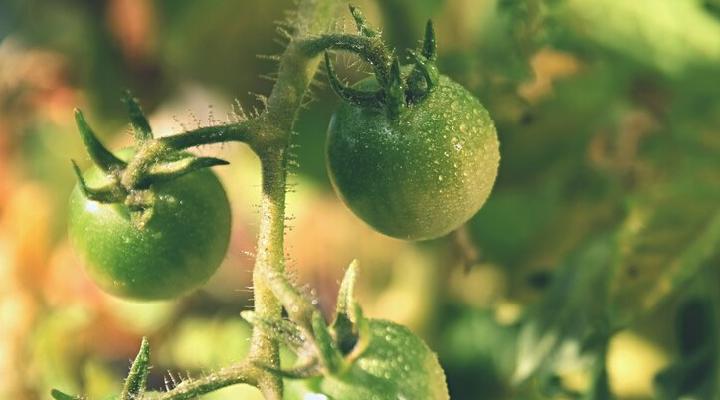
Although planting tomatoes in pots is simple, do not forget that tomatoes are not houseplants. Therefore, you should provide conditions similar to those of the summer garden in the open space.
Tomato bushes or seedlings are usually planted in the field in the spring, which does not threaten the risk of freezing the plant. However, growing tomatoes at home has other conditions. It is possible to extend this plant indoors at any time. It would be best to have a warm and bright place for this. Lamps for plant growth can also help provide the light the plant needs.
Choosing the suitable species for planting in a pot
Smaller varieties of cherry tomatoes are ideal for growing at home. For this, you can go for widespread types of cherry tomatoes such as “Sungold,” “Jelly Bean,” or “Tommy Toe.”
Pot conditions for planting tomatoes
It would be best to use large pots at least 50 cm in diameter. The drainage and soil of these pots must be suitable. Be sure to put a saucer under the pot to catch excess water.
Plant 1 tomato plant in each pot with these characteristics and give it 6 hours of sunlight daily. The soil of this pot should remain moist. So check it every day and water it if needed.
Essential tips for tomato plant maintenance
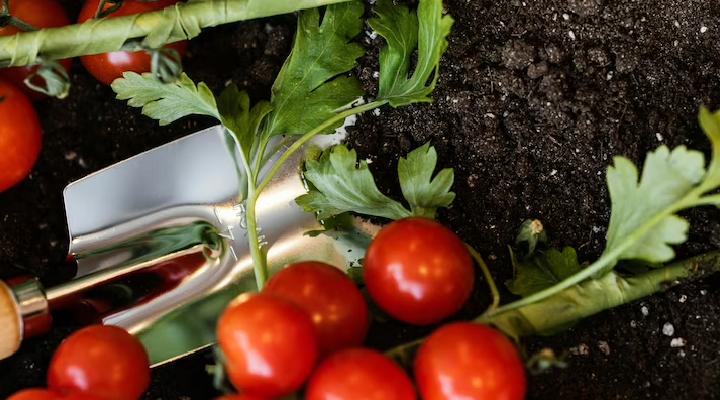
1. wATERING systems
Tomatoes should be watered once every 7 to 10 days after the first week of planting. You should give it about 500 ml of water each time. Drip irrigation is the best method of watering this plant. Watering the plant in the morning is better to prevent it from getting moldy. As the plant grows and the weather gets warmer, the water tomatoes need increases.
Note that the soil is only moist. Wetness of the earth is different from being wet and may harm the plant.
2. Using mulch or soil cover
Leaf soil, sawdust, and straw are the best mulches. After 1 or 2 weeks, surround the plant with one of these mulches. This will help reduce weed growth and moisten the soil in dry weather. The thickness of the mulch should be about 2.5 cm, and surround the plant with a circle with a diameter of about 30 cm.
3. Fertilization
Tomatoes grow better if the soil is enriched with organic matter. Use fertilizers for plant growth according to their instructions. Do not use lawn fertilizer to grow tomatoes because this fertilizer only causes the development of the plant’s stem and leaves.
Although excessive fertilization causes the plant to grow faster, it exposes it to the risk of diseases and pests more than before.
4. Shaking the plant
It would be best if you gently shook the planters or shelves occasionally. This work causes the uniform distribution of pollen and fruit production. Repeat this for 5 seconds 1 or 2 times a week after the plant flowers.
Common tomato pests and problems
- If the plant does not flower, it is probably because it does not receive enough light. Many flowering without fruit production usually happens due to insufficient light, low or inappropriate watering, and very high or shallow temperatures.
- The most crucial tomato pests are aphids and giant insects such as hornworms. You can use insecticidal soap or horticultural oils to deal with these pests. Some farms use chickens and roosters to deal with this problem. These animals can destroy vermin in a short period.
- Fungal diseases, blossom end rot, cracks on the fruit surface, sunburn, bacterial powdery mildew, leaf spot, powdery mildew, fusarium, and wilting are common tomato diseases, the most important causes of which are improper irrigation or fertilization, very high or shallow temperature, and drainage. is incorrect
you say
Growing fruits and vegetables like tomatoes at home is a cost-effective way to produce these foods. You will also be sure that the tomatoes are grown wholly organic and contain nutrients.
This article introduced you to planting tomatoes at home and in the field. Have you ever tried growing plants at home? Please share your experience of gardening and planting this plant at home with us and our dear audience.
